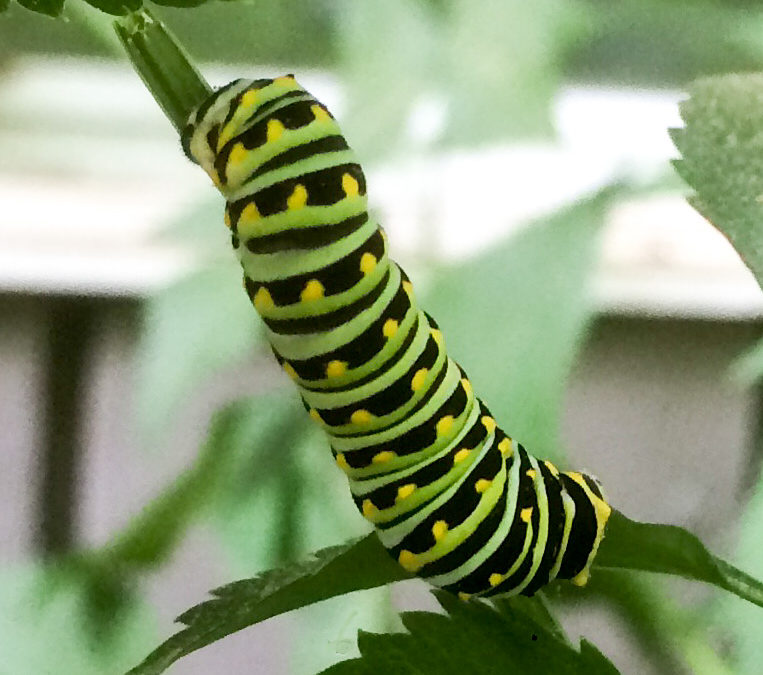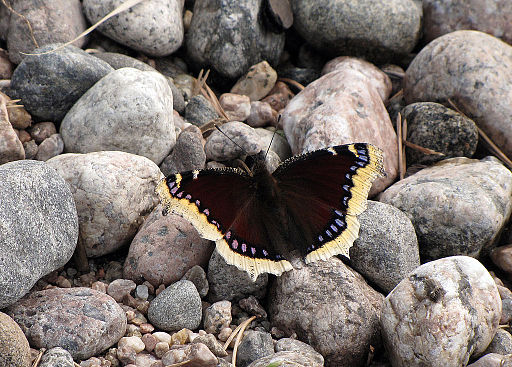


New England Caterpillar ID
Since spring is solidly here for us here in the Northeast and people are out exploring their gardens, this caterpillar identification key might come in useful: Caterpillars of the Eastern Forests. The Eastern Black Swallowtail (Papilo polygenes) caterpillar in the photo was on a plant in the retail area at Garden in the Woods. Keep your eyes open, you never know what you’ll see!
The larval host pants for the Eastern Black Swallowtail include plants in the carrot and parsley (Apiaceae) family: parsley, Queen Anne’s lace, wild carrot, celery, dill, and fennel. Many of those plants are not native, and it is important to note that many of the native plants in the Apiaceae family are quite poisonous, such as poison hemlock, water hemlock, and cow parsnip. I mention this because many species need wild spaces where native plants that are not suitable for gardens or cultivated spaces can grow.
The adult host plants for nectar include: pawpaw, red clover, phlox, asclepias, asters, and thistles.

Spring Butterfly – Morning Cloak



Early Spring Butterfly – Spring Azure

Soil Microbes – Do You Need to Add More?

By Fred, Edwin Broun, 1887-1981 [No restrictions], via Wikimedia Commons
My question is and always has been, “What is the simplest solution I can use?” My reasoning is that there is a greater likelihood that it can and will be embraced by my clients (and me!) So I’ve been talking to people and reading as much as I can and I’ve found a couple of helpful posts that discuss this issue, including the following reviews of research studies and articles: Soil Bacteria – The Myth of Identification & Management and Compost Tea: Examining the Science Behind the Claims. You decide what you want to use, but I like the simplest method!

Plants for Pollinators
We hear a lot about supporting pollinators in mainstream publications, but it is often difficult to find information that provides thorough lists of plants (not just the top 5 flowers), includes both larval food and nectar plants, includes bats and beetles rather than just bees and butterflies, or is specific to the regions in which we work. This is a great resource from the Pollinator Partnership on choosing Plants for Pollinators in our ecoregion here in the northeast. Does it include all the plants that support pollinators in our region? No. But it is a great place to start!































